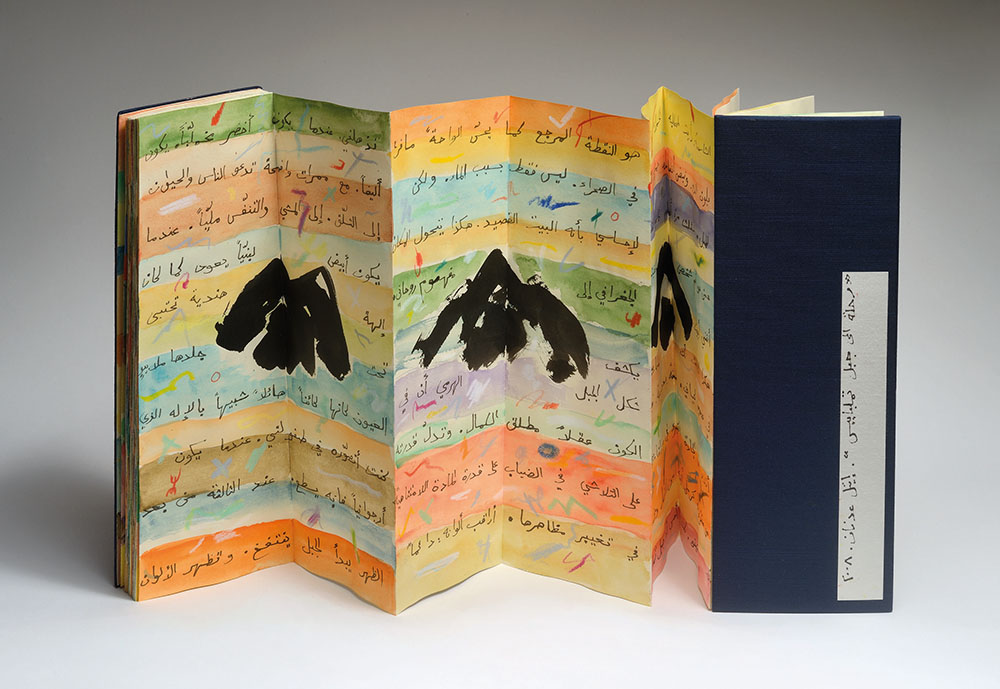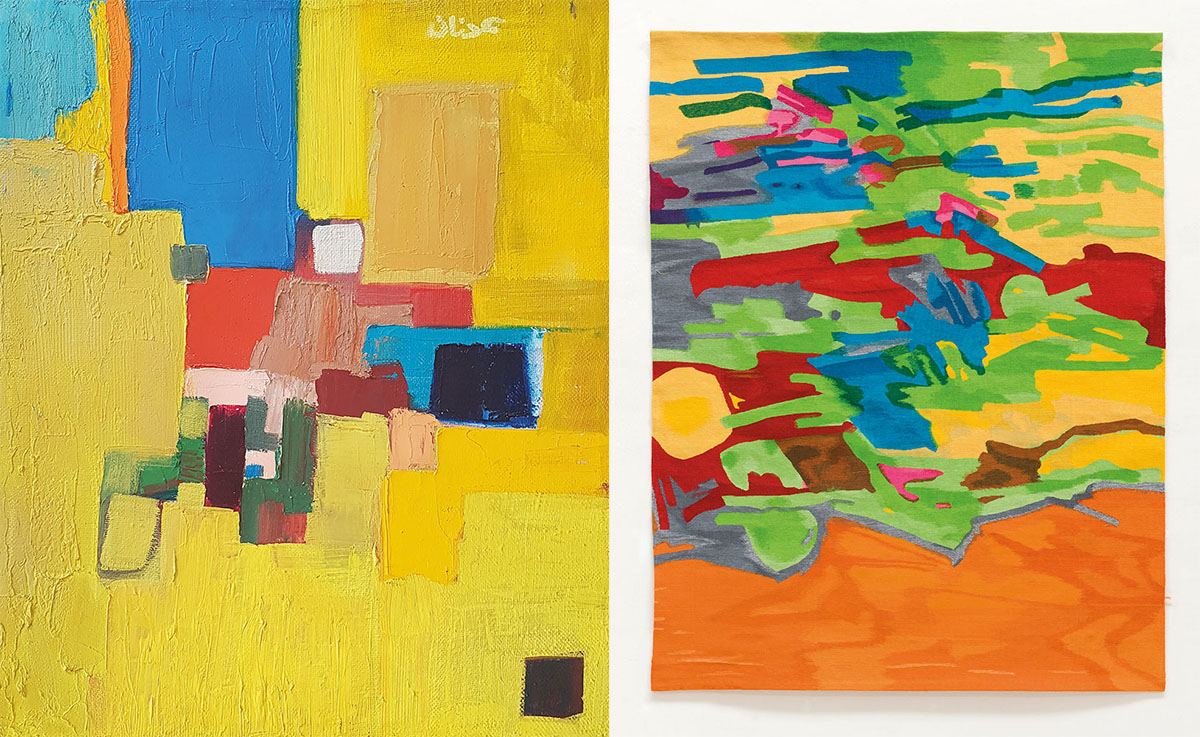ART CITIES:Bern-Etel Adnan
Etel Adnan’s career spans several decades and encompasses a wide range of media as it does traditions and locations. Adnan was first an author of poetry and prose, often addressing and protesting against the turmoil of the Vietnam War and the Lebanese Civil War. Informing her writing and later her artwork as well, was the landscape, its own history and her emotional and physical response to it.
By Efi Michaparou
Photo: Zentrum Paul Klee Archive
Etel Adnan’s solo exhibition at Zentrum Paul Klee unfolds a dialogue between her work and Paul Klee. Etel Adnan now lives in France and is a leading protagonist of Arab modernism. At first, she discovered Paul Klee through his diaries in the 1960s. His work and his texts made a lasting impression on her artistic work which includes painting, drawing, tapestry, film, ceramics, and leporello* artist books. Etel Adnan was born in 1925 and raised in Beirut, Lebanon. Her mother was a Greek from Smyrna, her father, a high ranking Ottoman officer born in Damascus. In Lebanon, she was educated in French schools. She studied philosophy at the Sorbonne, Paris. In January 1955 she went to the United States to pursue post-graduate studies in philosophy at U.C. Berkeley, and Harvard. From 1958 to 1972, she taught philosophy at Dominican College of San Rafael, California. Based on her feelings of connection to, and solidarity with the Algerian war of independence, she began to resist the political implications of writing in French and shifted the focus of her creative expression to visual art. At first, she discovered Paul Klee through his diaries in the 1960s. His work and his texts made a lasting impression on her artistic work which includes painting, drawing, tapestry, film, ceramics, and leporello* artist books. But it was with her participation in the poets’ movement against the war in Vietnam that she began to write poems and became, in her words, “an American poet”. While these early works were largely abstract compositions – with squares of color applied directly from the tube – she was interested in the immediate beauty of color. Her earliest paintings were suggestive of landscapes and included forms that referenced specific places. In the 1970s she moved to the area near Mount Tamalpais in California, which became the central subject matter of numerous paintings and poems. From the 1960s until the present day Adnan has also made tapestries, inspired by the feeling and color of the Persian rugs of her childhood. Never translating existing paintings into tapestries, she uses specific designs for her textile works. Over the course of the 1960s, Adnan moved away from purely abstract forms and, in 1964, discovered leporellos sketchbooks in which she could mix drawing with writing and poetry. Often working in series, her painting continued to move between recognisable and imagined forms, revealing her sensitivity to color and shape extracted from the environments in which she found herself. In the late 1970s, she wrote texts for two documentaries made by Jocelyne Saab, on the civil war in Lebanon, which were shown on French television as well as in Europe and Japan. In 1972, she moved back to Beirut and worked as cultural editor for two daily newspapers: Al Safa, then for L’Orient le Jour. After the first year of the Lebanese Civil War, Adnan moved to Paris where she currently lives and works. In 1977, her novel “Sitt Marie-Rose” (a critique of the various factions involved, as well as gender equality and Western influence in the Middle East told through the life and tragic death of a single woman) was published in Paris, and won the “France-Pays Arabes” award. This novel has been translated into more than 10 languages, and was to have an immense influence, becoming a classic of War Literature. In 1977, Adnan re-established herself in California, making Sausalito her home, with frequent stays in Paris.
*The term leporello refers to printed material folded into an accordion-pleat style. Also sometimes known as a concertina fold, it is a method of parallel folding with the folds alternating between front and back.
Info: Zentrum Paul Klee, Monument im Fruchtland 3, Bern, Duration: 15/6-7/10/18, Days & Hours: Tue-Sat 10:00-17:00, www.zpk.org







